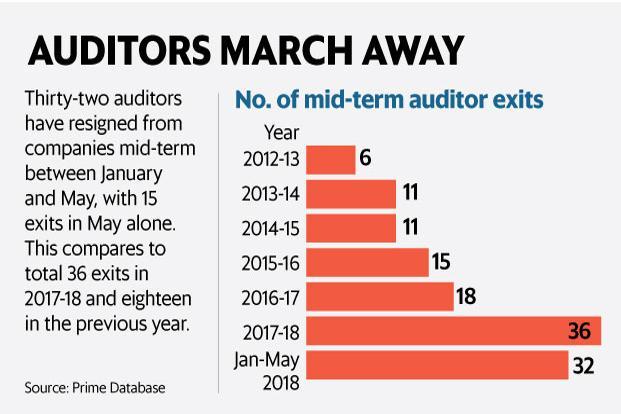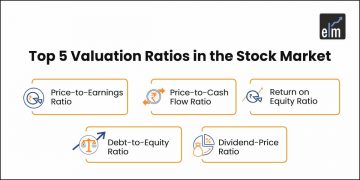When the company’s operations worsen, the tension starts showing in their financial numbers. In order to hide this stress a lot of businesses try to hide this situation, by being little creative with their financial accounting so that the investors don’t sell off their stakes. The concept of creative accounting is the method of falsely portraying a better image of the company by maintaining accounting standards.
“Investing is not nearly as difficult as it looks. Successful investing involves doing a few things right and avoiding serious mistakes”-John C. Bogle
Let us take the example of the Satyam scandal. If an investor studied the financials of the company before the scam, then he would have definitely entered and started investing for the long term as the financials were too good and also audited by one of the four big MNCs auditors in India, Price water house Coopers. But one day, on 10th January 2009 Satyam shares fell to 11.5 rupees the lowest since 1998. The market capitalization fell from Rs. 1,607,04 crores to Rs. 15,262 crores within a day. This fall was due to the management’s falsified accounts and income tax returns, and fabricated invoices.
| Table of Contents |
|---|
| Creative Accounting Methods |
| How to detect Accounting Manipulation? |
| Creative Accounting Example |
| Bottomline |
Creative Accounting Methods
The question is can this creativity be detected through the results they release quarterly and annually? No one can be certain about this but there are chances that it can be detected.
Auditors
When it comes to analyzing the financial statements, auditors play an important role. While studying the annual report, one should lookout for frequent changing of auditors by the company. An auditor is appointed for auditing a company for a tenure of 5 Years for every company in India and not more than that. But if we see that there are frequent changes in auditors in a span of 1-2 years, this might signal a warning sign.
For example, Price Waterhouse & Co had resigned as the auditor of Vakrangee Ltd because of lack of information about its financial books, bullion, and jewellery business.

If we get to know through our sources or media that the relationship between the management and the auditor is not good or there are disputes between them, this also raises a red flag. There are chances that the management might try to influence the auditors. So keep a close check.
How to detect Accounting Manipulation?
The main three pillars of the annual report are income statement, balance sheet, and cash flow. Any creative accounting or manipulation in any of these accounts is reflected in the other account for definite. Let us discuss how manipulation can be detected in these accounts:
Income Statement –
Revenue is the main component in this statement. The company can inflate current period earnings in the income statement by intentionally inflating the gains or revenues; or the company can deflate current period expenses. This creative accounting can make the income statement look good. This can be done through:
- Recording the revenue before taking the delivery of the goods.
- Recording fictitious revenues; means recording revenue before the sales took place.
- Recording increase in revenues through categorizing investment gains as revenue.
- Shifting current expenses to earlier or later accounting periods.
- Shifting future expenses to the current accounting period.
Provision for doubtful accounts –
Most of the investors look at the net income and EPS and then arrive at a valuation. They do not look beyond it and that’s the mistake they make. Accounts receivable play a big role in detecting the manipulation in income. However, they can also be used to inflate earnings by using provision for doubtful debts.One can detect this when the reserves for doubtful debts are inadequate by comparing the accounts receivable to revenue and net income. If the balance sheet item is growing at a faster pace than the income statement item then the person may look at whether or not the provision for debt is adequate or not.Understanding business models also helps in detecting the manipulation.You can follow these 10 Tips To Avoid Common Financial Scams and Frauds.
Inventory –
Inventory refers to the value of the goods which are manufactured but not sold. When these goods are sold, the values of these goods are then transferred to income statement as cost of goods sold. An overstating value of the cost of goods sold can artificially increase the net income.A person can detect the overvalued inventory by determining whether the inventory is increasing faster than sales; if there is a decrease in the inventory turnover or whether the inventory is rising faster than total assets.
Cash flows –
Management sometimes tries to manipulate the cash flow to make it appear higher than it should really look. A high cash flow indicates good financial health. Operating cash flow can be manipulated through:
Misusing of non-operating cash – Sometimes the companies generate income from the operation which is not related to their normal business activity. They generate income by trading in the securities market. This is known as the short-term investment. If the company adds these funds in the normal cash flow, it will give an impression that it regularly generates receivables through standard operations than it actually is.
Working Capital Manipulation – The working capital accounts are directly accountable for the reporting of cash flows. Account Receivables increases the cash flows whereas Accounts Payables decreases the cash flows. The company can artificially inflate the cash flows by speeding the recognition of funds coming in and delaying the recognition of funds leaving till next period.
“You can fool all the people some of the time, and some of the people all the time, but you cannot fool all the people all the time”- Abraham Lincoln
Creative Accounting Example
For example, Arrow Greentech Ltd., a plastic-producing company had declared unusual revenues. The independent directors had also resigned before the announcement of the results but they stated that they resigned on personal grounds. If these kinds of situations are a frequent happening in a company then one should avoid investing in such kinds of companies.

In the above chart, we can see how the market reacted to this news.
If you would like to get a comprehensive understanding of methods of detecting manipulation in financial statements, the webinar on How to Detect Manipulation in Financial Statements will help you do it yourself.
Bottomline
An investor should always stay away from investing in the company if he/she has doubts or difficulty in understanding the financial statements. Among the limited financial statements, which an investor can access is very difficult to ascertain whether the problem areas are really true; or creative accounting is done to manipulate in order to make the financial health of the company look good.
In order to get the latest updates on Financial Markets visit https://stockedge.com/






